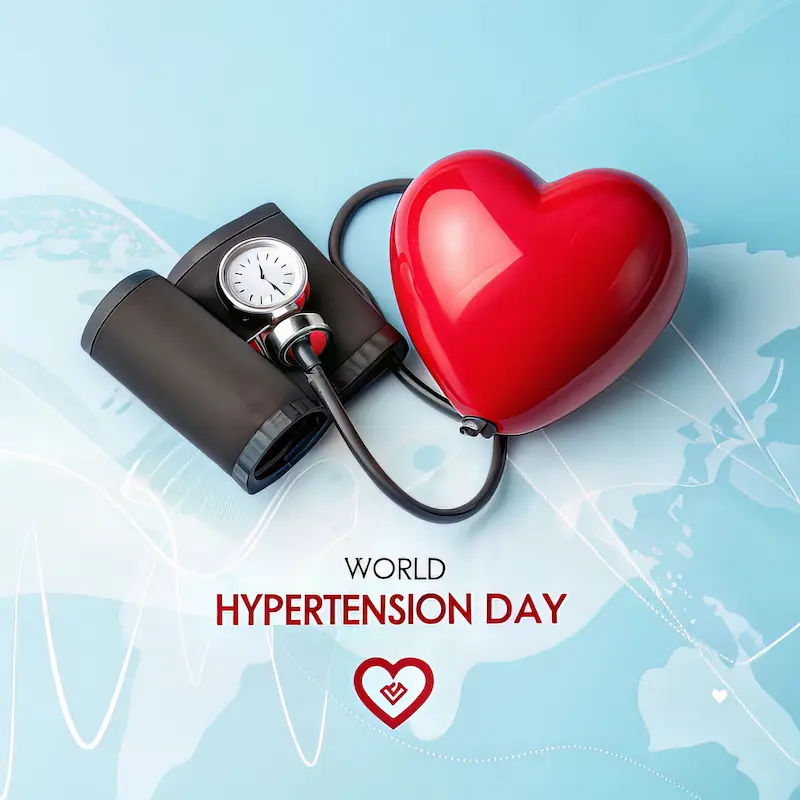Pheochromocytoma and High Blood Pressure
Explore all about pheochromocytoma, a rare adrenal gland tumour. Explore the causes, symptoms, treatment options, and preventive tips. Learn how to manage high blood pressure, risks, complications, and lifestyle adjustments to improve quality of life for long-term health.

Written by Dr Sonia Bhatt
Last updated on 3rd Jul, 2025
Pheochromocytoma is a tumour that forms in the adrenal gland. While this tumour may be benign in some cases, it may sometimes be malignant. When one experiences the growth of pheochromocytoma, the tumour releases several hormones, which may lead to symptoms like high blood pressure, headache, sweating, or even panic attacks. However, in some cases, there may not be any symptoms at all. Although it is rare, it is curable.
Let us discuss in this blog everything you need to know about pheochromocytoma including the causes, symptoms, medications, and preventive tips.
Causes of Pheochromocytoma
The exact causes of pheochromocytoma are unknown. However, some of the probable causes are listed below:
Genetic factors
Multiple endocrine neoplasia, type 2: Also called (MEN 2), this causes tumours in the endocrine system or other body parts like lips, mouth, parathyroid glands, thyroid, digestive system, etc.
Von Hippel-Lindau disease: This condition causes tumours in many body parts like the endocrine system, spinal cord, brain, kidneys, or pancreas.
Neurofibromatosis 1: It causes tumours in the skin and the optic nerve.
Hereditary paraganglioma syndromes: This is a genetic condition that can be passed down in families.
Environmental and Lifestyle Factors
Although the exact causes of pheochromocytoma are not known, certain environmental and lifestyle factors play a significant role:
Stressful environments: Stress worsens high blood pressure in individuals. Prolonged exposure to stress can exacerbate the symptoms due to an increased level of catecholamine secretion.
Patterns of physical activity: Engaging in intense exercises can trigger surges in catecholamine and cause the blood pressure to spike. On the other hand, sedentary lifestyles increase the risk of cardiovascular issues and hypertension.
Diet: Intake of salt in large quantities can worsen hypertension, which is associated with pheochromocytoma. Alongside this, consumption of caffeine and tobacco may also aggravate the symptoms.
Symptoms and Signs
The symptoms of pheochromocytoma may increase and subside. When they keep coming back several times, they are called attacks or spells.
Some symptoms of pheochromocytoma include:
High blood pressure
Headache
Heavy heartbeat
Sweating
Nervous shaking
Vision problems
Shortness of breath
Abdominal or chest pain
Discolouration of skin
Anxiety
Constipation or diarrhoea
Weight loss
Consult Top Cardiologist
Diagnosis of Pheochromocytoma
To diagnose pheochromocytoma, one has to undergo several lab tests and imaging tests.
Lab tests:
Anyone who is suspected of pheochromocytoma has to undergo the following lab tests:
24-hour urine test: Detecting the levels of catecholamines or adrenaline hormones can help detect pheochromocytoma.
Blood catecholamines test: Blood tests can also help detect the levels of catecholamines in the blood.
Medical imaging:
If lab tests detect the signs of pheochromocytoma, one has to undergo imaging tests to detect the tumour:
CT Scan: This can help take X-ray images of the interiors of your body.
MRI: Another technique that extracts detailed pictures of the areas inside the body.
M-iodobenzylguanidine (MIBG) imaging: This technique uses a radioactive tracer to detect tumours.
Positron emission tomography (PET): This nuclear medicine imaging test helps produce 3D images of the body’s interior.
Differential Diagnosis
A healthcare specialist may check for the following:
Medical history
Any previous instance of pheochromocytoma in your family
Symptoms like high blood pressure or paroxysmal attacks that do not respond to normal medication
Treatment Options
Treatment of pheochromocytoma is managed using an array of treatment approaches. Some of them include:
Medication Management
The following medicines can help keep your blood pressure under check by managing the oversecretion of hormones.
Alpha-blockers to keep the blood pressure normal
Beta-blockers to keep the heart rate normal
Medicines that prevent the effect of hormone oversecretion
Medicines that help open and relax the blood vessels
However, surgery is the most effective treatment for pheochromocytoma. Doctors may go for a laparoscopic (minimally invasive) surgery.
High Blood Pressure Management
Managing high blood pressure is crucial for overall health, especially when addressing conditions like pheochromocytoma. Here are some changes that can be implemented.
Lifestyle Modifications
Although lifestyle factors may not be directly associated with causing pheochromocytoma, changes in lifestyle can help manage your high blood pressure. Some of the lifestyle changes one can incorporate are as follows:
Consume a diet that is healthy for your heart
Engage in regular physical activity
Lose weight to maintain a healthy range of weight
Limit the consumption of alcohol and smoking
Get adequate sleep (around 7-9 hours) every day
Pharmacological Treatments
Medicines that help treat high blood pressure include the following:
Diuretics or water pills: They help remove the water and sodium from the body.
Angiotensin-converting enzyme (ACE) inhibitors and Angiotensin ll receptor blockers (ARB): They help the blood vessels relax.
Calcium channel blockers: They help the blood vessels muscles relax and even help slow down the heart rate.
Risks and Complications
Pheochromocytoma is associated with the risk of high blood pressure, which can further damage the organs. This condition poses a major threat to the tissues of the brain, kidneys, blood vessel systems, and the heart. It may lead to dangerous conditions such as:
Stroke
Kidney failure
Vision loss
Artery blockage
Some cardiovascular complications that may arise as a result of pheochromocytoma are as follows:
Ischemic heart disease
Acute myocardial infarction
Cardiac arrhythmias
Pulmonary edema
Heart failure
Although rare, in some cases, pheochromocytoma is malignant, that is, cancerous. These cancer cells can spread to other body parts like the lymph system, liver, bones, lungs, etc.
Prognosis
After surgery is successfully carried out, it may be possible to eradicate the signs of the tumour. However, post-operative care for pheochromocytoma is crucial to manage the chances of potential complications.
The immediate concerns include hypotension and hypoglycemia.
Hypotension: Hypotension is caused due to the alpha blockade that is consumed before the operation, or due to intraoperative blood loss. To manage this, patients need aggressive IV fluid resuscitation and transient vasopressor support (if needed).
Hypoglycemia: The abrupt reduction in the levels of catecholamines after the removal of the tumour tends to restore insulin sensitivity and causes hypoglycemia. As a result, the catecholamine levels will remain high for a prolonged period after the operation has concluded.
In response to this, it is important to monitor the blood glucose levels for 24 hours. Necessary treatment to maintain the normal glucose level should be undertaken.
Long-term Maintenance
Pheochromocytoma patients are exposed to the risk of recurrence, for which long-term follow-up is important. These include:
Regular monitoring of blood pressure levels
Timely imaging and lab tests
Although effective postoperative care eliminates the risk of cardiovascular problems and improves the outcomes, it is important to keep the patient under vigilance.
Conclusion: Living with Pheochromocytoma and Hypertension
Anyone with pheochromocytoma and hypertension must constantly manage and adjust their lifestyle. They should undergo regular medical check-ups to keep their blood pressure under check and manage the chances of potential recurrences. This helps in the early detection of any potential complications.
Adopting a heart-healthy lifestyle, like consuming a balanced diet, exercising regularly, abstaining from smoking or drinking, and managing stress effectively can be of great help. Patients should also adhere to the medicines prescribed to them and discuss their concerns with healthcare professionals. Therefore, through vigilant follow-ups and proper care, individuals can effectively manage the long-term implications of pheochromocytoma and improve their quality of life.
Consult Top Cardiologist
Consult Top Cardiologist

Dr. Syed Akram Ali
Cardiologist
14 Years • MBBS DCH DNB(PED) DNB(CARD) CONSULTANT INTERVENTOINAL CARDIOLOGIST, EUROPEAN SOCIETY OF CARDIOLOGY CERTIFIED HEART FAILURE SPECIALIST
Hyderabad
AYMAN POLYCLINIC, Hyderabad

Dr. Tripti Deb
Cardiologist
40 Years • MBBS, MD, DM, FACC, FESC
Hyderabad
Apollo Hospitals Jubilee Hills, Hyderabad

Dr. Anand Ravi
General Physician
2 Years • MBBS
Bengaluru
PRESTIGE SHANTHINIKETAN - SOCIETY CLINIC, Bengaluru

Dr. Sumanjita Bora
Cardiologist
9 Years • MBBS, PGDCC
Bengaluru
Apollo Clinic, Sarjapur Road, Bengaluru
Dr. Mahendranath Subramani Prasad
Cardiologist
16 Years • MBBS,MS ,DNB, M.Ch. Cardiovascular and Thoracic Surgery(Cardiology)
Bengaluru
Apollo Clinic, Sarjapur Road, Bengaluru
Consult Top Cardiologist

Dr. Syed Akram Ali
Cardiologist
14 Years • MBBS DCH DNB(PED) DNB(CARD) CONSULTANT INTERVENTOINAL CARDIOLOGIST, EUROPEAN SOCIETY OF CARDIOLOGY CERTIFIED HEART FAILURE SPECIALIST
Hyderabad
AYMAN POLYCLINIC, Hyderabad

Dr. Tripti Deb
Cardiologist
40 Years • MBBS, MD, DM, FACC, FESC
Hyderabad
Apollo Hospitals Jubilee Hills, Hyderabad

Dr. Anand Ravi
General Physician
2 Years • MBBS
Bengaluru
PRESTIGE SHANTHINIKETAN - SOCIETY CLINIC, Bengaluru

Dr. Sumanjita Bora
Cardiologist
9 Years • MBBS, PGDCC
Bengaluru
Apollo Clinic, Sarjapur Road, Bengaluru
Dr. Mahendranath Subramani Prasad
Cardiologist
16 Years • MBBS,MS ,DNB, M.Ch. Cardiovascular and Thoracic Surgery(Cardiology)
Bengaluru
Apollo Clinic, Sarjapur Road, Bengaluru


.webp)
